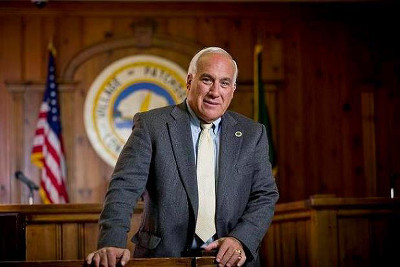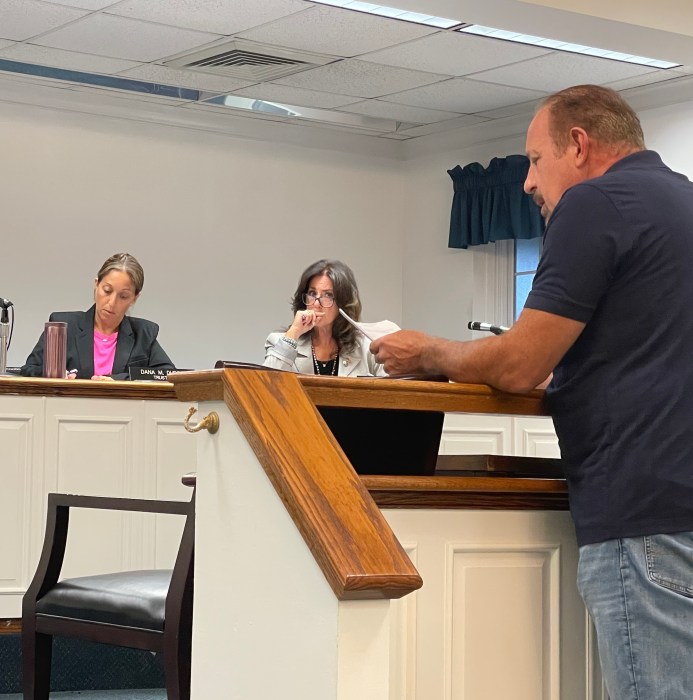Across the Island some municipalities are clearly ahead of the pack. These communities possess the good fortune to have visionary leaders, courageous council members and the right combination of assets, infrastructure and drive to make a difference in people’s lives.
When you look for local role models, a few stellar examples quickly come to mind: Jack Schnirman, Long Beach city manager; Paul Pontieri, mayor of Patchogue; Francis X. Murray, mayor of Rockville Centre; and state Sen. Jack Martins, the former mayor of Mineola. They didn’t all face the same problems, but these guys knew how to get it right.
For Long Beach, Jack Schnirman faced a daunting challenge. As city manager, he wasn’t an elected leader but he was responsible for getting all the parties on board so he could right the city’s precarious finances. He inherited a $14.7 million deficit and he turned it around so now the city has a $7 million fund balance. Long Beach just got its eighth consecutive positive credit action from Moody’s. Not only did they upgrade the city’s bond rating, they gave the city a positive outlook going forward.
By comparison, Nassau County is under the control of the Nassau Interim Finance Authority (NIFA) because of its chronic failure to balance the books. The Town of Hempstead’s credit rating has been downgraded many times, and Moody’s just withdrew its rating for the Town of Oyster Bay due to irregular filings—town officials say a computer broke down—and Standard & Poor’s is contemplating doing the same. In the town’s defense, a withdrawal is not the same as a downgrade, but it’s not an encouraging sign. Both ratings agencies have given the Town of Oyster Bay until the end of March to get its financial filings in order before they issue their ratings.
“We are proud to be one of the municipalities moving in the right direction,” said Schnirman.
On his watch, Long Beach declared a fiscal crisis, working with the city’s employees to achieve some contract concessions and downsize the workforce. Then came Superstorm Sandy. Still, by all accounts, Long Beach has managed to rebound—and been rewarded by consecutive good bond ratings. Schnirman praises the city council for “fiercely advocating for the resources to rebuild our city the right way with stronger infrastructure to protect ourselves from future storms.”
To Schnirman’s credit, he navigated the city through the aftermath while staying within Gov. Andrew Cuomo’s tax cap of either a 2-percent limit or the rate of inflation, whichever is lower. In Long Beach, the allowable tax increase is .47 percent because inflation is so low.
“The challenge is that it caps revenue but it doesn’t cap expenses,” he explained. “Many of the fixed costs go up every year far greater than the size of the cap, so it necessitates constantly making cuts and difficult choices and being creative in order to live within it.”
But Schnirman has been able to make it work.

“Jack has brought exceptional professionalism to the management of the city’s finances, and the repair and development of its infrastructure,” said Lawrence C. Levy, executive dean at Hofstra University’s National Center for Suburban Studies. “He was one of the heroes of Sandy.”
Looking around the Island, Levy singles out Rockville Centre Mayor Francis X. Murray for what he’s done for his community.
“Fran Murray is one of those mayors who has come to realize that the future of the village lies in making even better use of a strong downtown,” explained Levy. “He has understood that a lot of people want to move to Rockville Centre, but not everybody wants to live in a traditional, single-family house. They want rental apartments. They want to be able to walk to restaurants, to the movie theater.”
Murray’s solution was to go vertical to solve the parking problem as well as add more apartments. Critics said Murray’s plan calling for more density was untenable, making the dire prediction that “Queensification” was about to transform their village, but it did not come to pass, as Levy observed.
“Rockville Centre could be a model for downtown development rocketing a whole village!” said Levy. And he should know, because he now calls the village home.
State Sen. Jack Martins (R-Mineola) first made waves in municipal circles when he helped transform Mineola as mayor by focusing on its downtown.
“He used to have political leaders and other supporters whispering in his ear that if he goes ahead with his proposed high rises [downtown], his promising career would come to an end,” Levy said. “He just didn’t listen. He decided this was best for the village. People would see it and the payoff would be huge.”
They did and it was. Martins won his mayoral re-election by “an enormous margin,” Levy observed, then he won his state Senate race by defeating an incumbent Democrat and now he’s running for Congress to fill the empty seat vacated by Rep. Steve Israel (D-Dix Hills). In some sense, things started looking up for Martins when he embraced high rises.
Patchogue Mayor Paul Pontieri faced a different problem.
“I think Paul Pontieri had the hardest row to hoe,” said Levy. “He started with a village that was deeply down on its heels and almost hopeless.”
Among his initiatives in Patchogue, Pontieri brought in a cultural arts center, encouraged developers to offer relatively affordable residential options, and created a vibrant, younger feel to the downtown.

“But he had to go to war with the political and business and civic establishment,” Levy said. “He was willing to put his career and his mayoralty on the line, and he has been validated and vindicated over and over again. People often refer to him as the poster child for the new suburbia of Long Island.”
Pontieri himself puts it more humbly.
“I lived in Patchogue my whole life so I knew we had the bones and the strength to get something done,” he said. “What I saw were blighted properties that could be turned into opportunities.”
He got upgrades for the village’s sewage treatment plant to accommodate higher density. Or, as Levy put it, “He not only saw above ground—he saw below ground!”
Pontieri knew he had to revitalize the village’s downtown. “Nothing comes into a town that is empty. You need to put feet on the street,” he said. And there was another stark reality, which may sound ironic today. “We had a parking problem—there were empty spaces.” In fact, about 2,000 of them, he said.
But a decade ago in came Copper Beech Village, developed by Pulti Homes of New York, on a 5-acre site with 80 units of affordable housing—16 per acre. Suffolk County chipped in $3.3 million to help Patchogue acquire the land from the previous homeowners. Then other high-density developments started sprouting up.
“Once Pulti invested the first $5 million, it said that we’re worth investing in,” said Pontieri. “We cleaned up five acres of blighted property and put in 80 families with an average age of 38 years old.”
Young families are vital to the future, Pontieri says.
“The communities that fight this, they’re going to be the ones without the Little Leagues, because young families won’t have a place to start or invest in,” the mayor said, pointing out that his vision comes with some self-interest as well. “Someday I’m going to want to sell my house, and I’m hoping that one of these kids who’s invested in this village will look at my home and want to buy it!”
Villagers started to get with the program he laid out once they could see the caliber of the development, the attention to design and details.
“Let the developers make the money they need to make and they’ll stay with the project and give you quality,” Pontieri said. “Squeeze them too much and you end up with what you deserve.”
Can other villages do what Pontieri did with Patchogue?
“They can duplicate it,” the mayor insisted. “Don’t just listen to the gray-haired guys in the audience saying, ‘No!’ Understand that there’s a majority of the population out there that’s looking for change.”
What these leaders have in common, Levy said, is “They’ve dared to be different.”





































